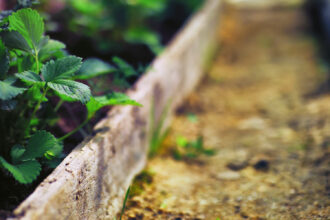The trend on holding back to nature is noticeable virtually in every area of life. Ecological roofing is also becoming an increasingly popular choice. Today’s entry is devoted to green roofs, which are natural enclaves in the centres of big cities.
What is a living roof and how is it constructed?
The modern living roof is a type of roofing made of specially prepared components that allow for the cultivation of plants. The structure of the roof consists of several layers:
- plants – appropriate for the growth of grass, shrubs or flowers,
- filtering layer – protecting the drainage from contamination,
- drainage – serving as water retention and drainage agent,
- protective – securing lower levels against damage due to root development,
- thermal insulation – performing the tasks of thermal insulation and additional drainage,
- waterproofing – protecting the ceiling against the ingress of moisture.
The constructions of this type are a perfect complement to conventional squares or pocket parks in highly urbanized centers of large urban agglomerations.
What are the advantages and what is the use of a green roof?
Innovative natural roofs are solutions whose application brings a number of measurable economic and ecological benefits. What are the advantages and what is the use of a green roof?
- Purification of the atmosphere – plantings of living plants actively filter particles of suspended dust PM2.5 and PM10, and also absorb carbon dioxide, producing oxygen.
- Retention – the vegetation layer buffers the rainwater, contributing to the stabilization of the groundwater level, lower load on the sewage system and reduction of the risk of flooding.
- Climate – the presence of green roofing materials results in higher absorption of solar radiation and, consequently, lower ambient temperature.
- Noise reduction – a natural roof is an effective sound barrier, serving as a natural acoustic screen, increasing the comfort of using the building.
- Protection against fire – the described solutions also provide additional fire protection, thanks to the accumulation of large amounts of moisture in the plant layer.
- Greater biodiversity – “ecological roof is a place of development for herbs and grasses, as well as a perfect shelter for birds and insects living in the urban space.
- Better mood – green surroundings have a positive effect on the mental well-being of high-rise residents and office workers, contributing to stress reduction.
|||UNTRANSLATED_CONTENT_START|||Decydując się na wykonanie dachu, warto wybrać pokrycia dachowe Blachodach, uznanego dostawcy elementów budowlanych. |||UNTRANSLATED_CONTENT_END|||Where are green roofs used?
- Shopping centres.
- Supermarkets
- Multi-storey office skyscrapers.
- Public facilities.
- Residential estates.
The construction of the garden at the top of the building contributes to a noticeable increase in its value and, at the same time, to the attractiveness of the facility for potential investors.
Green roof – an ecological roofing material
Reducing the concentration of suspended dust and carbon dioxide, and at the same time improving the well-being of residents, are only some of the advantages of building a green roof. If you are looking for a way to make your investment in the city centre more attractive, choose ecological roofing!


